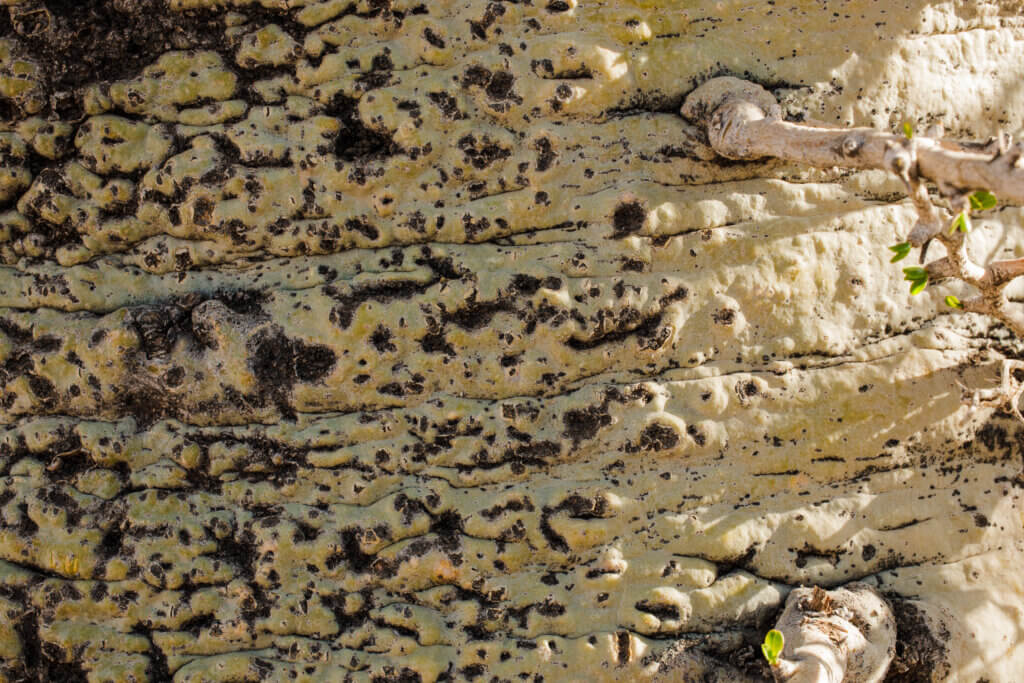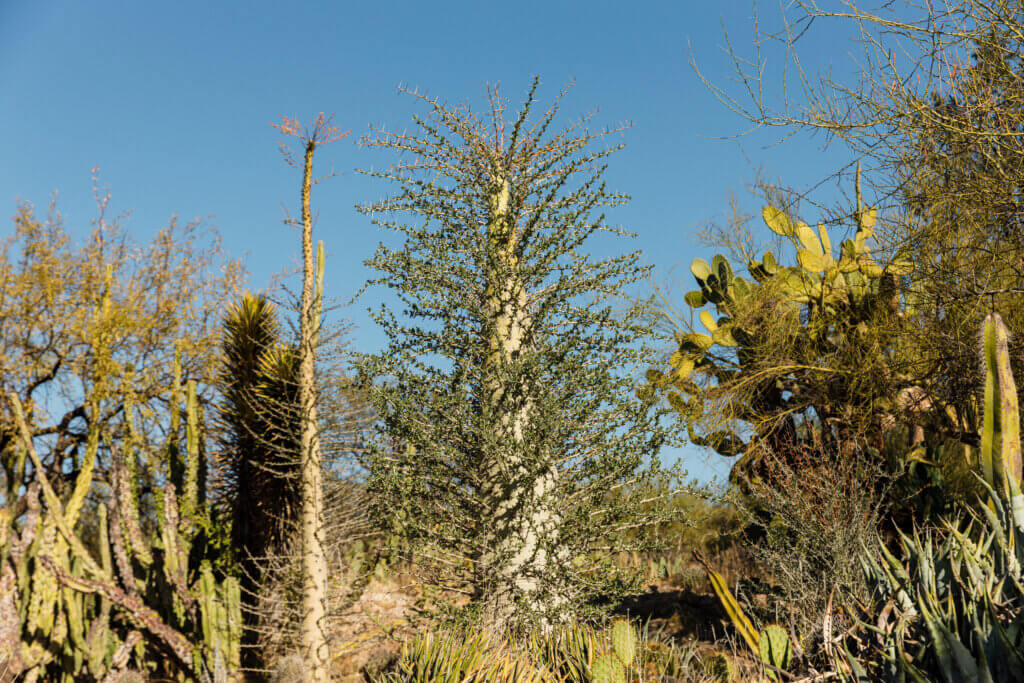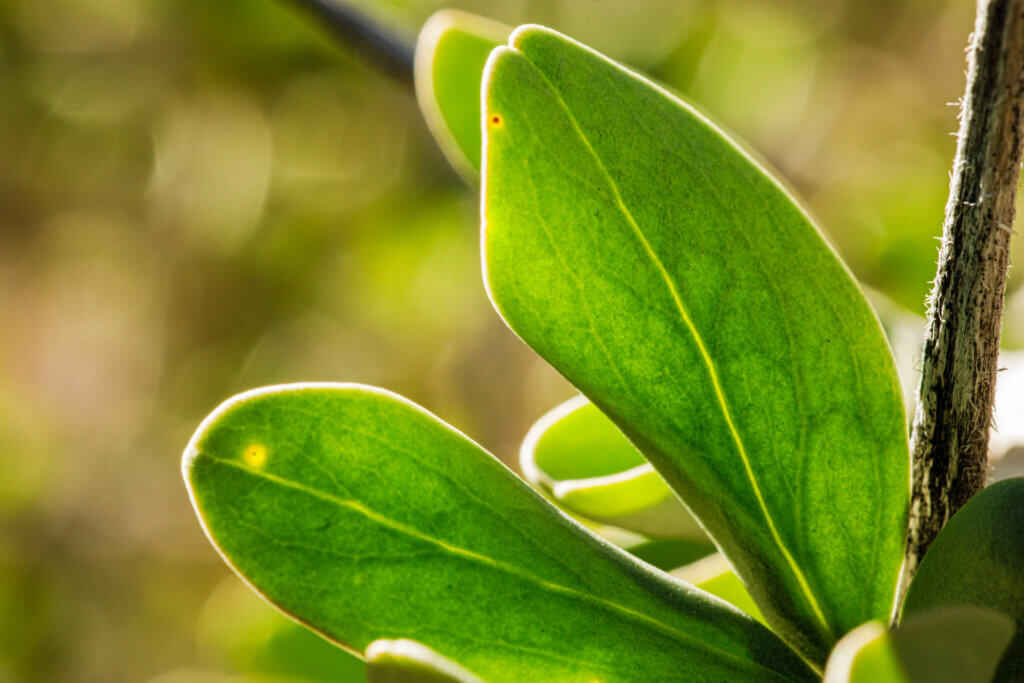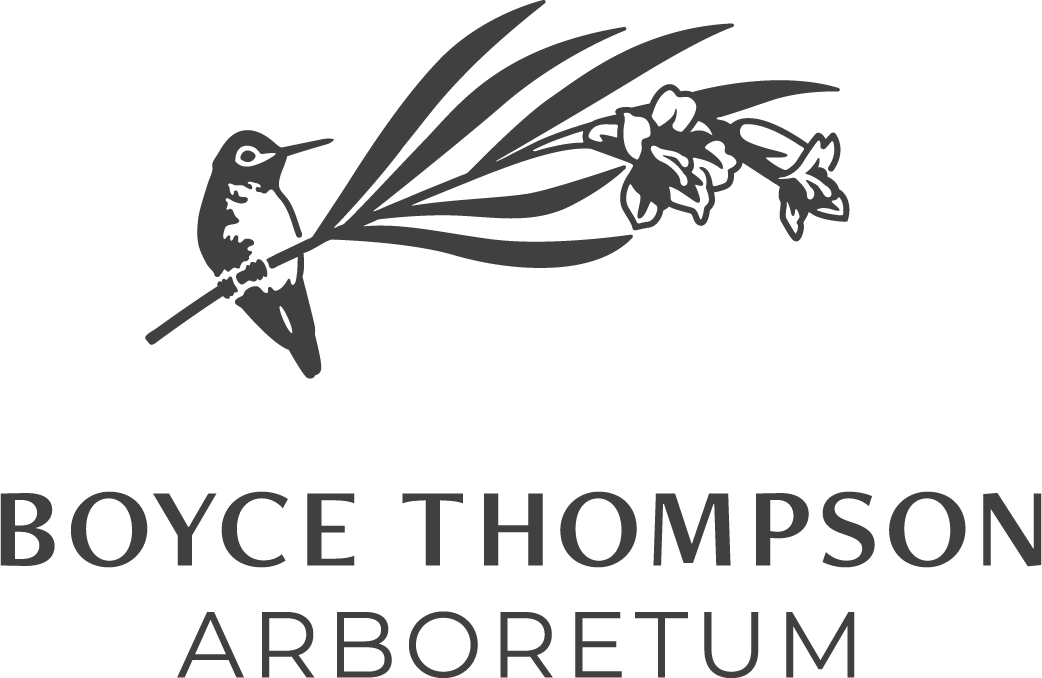The Boojum Tree: Origin, Adaptations, and Interesting Facts
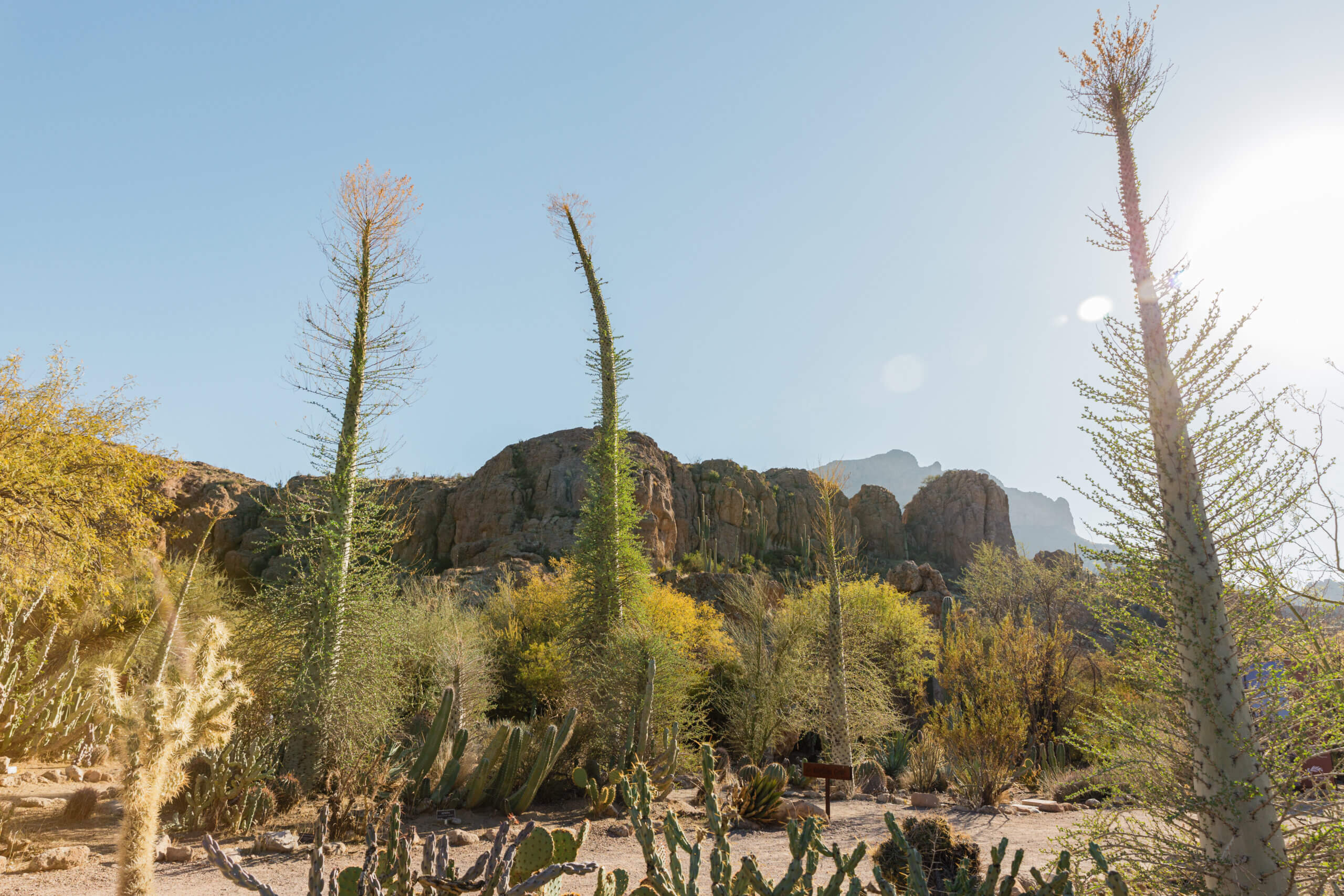
In 1925, an expedition was made to Puerto Libertad by several institutions, including Boyce Thompson Arboretum. Two boojums were brought back to the Arboretum and planted. Although one did not survive, the other one lives on.
Since then, more boojums have been added to the area in the Arboretum known as Boojum Cove. The boojum tree, scientifically known as Fouquieria columnaris, captivates visitors with its strange appearance and intriguing characteristics.
Origin and Where It Lives
Boojum is native to the Baja California and Sonora regions of Mexico. It thrives in arid desert environments. It stands out among the other desert plants with its unique silhouette. It’s shaped like an upside-down carrot with skinny branches reaching skyward.
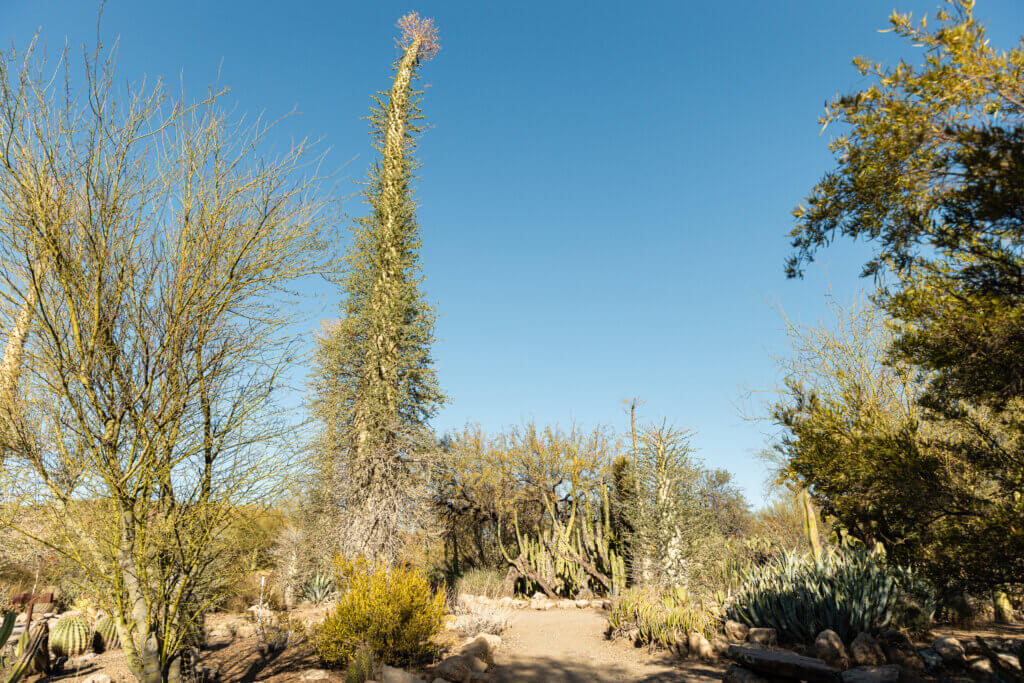

Plant Basics
Belonging to the family Fouquieriaceae, boojum can grow quite tall despite their slow growth. The tallest boojum at Boyce Thompson Arboretum is over 32 feet tall!
The plant’s trunk serves as a water reservoir. The leaves, which are small and scale-like, reduce water loss through transpiration. This adaptation is crucial for survival in harsh climates.
Smart Water Storage
One of the most interesting adaptations of boojum is how it stores water. The plant’s trunk gets bigger at the base, forming a bulb shape that holds water during periods of drought. Boojum can survive in the desert without rain for a long time, which is important for its survival.
Family Connection with Ocotillo
Boojum is related to Arizona’s native plant, ocotillo (Fouquieria splendens). They both belong to the same Fouquieriaceae family. These desert plants are very similar in their adaptive features, like their thin branches and small leaves that help them survive in dry conditions.
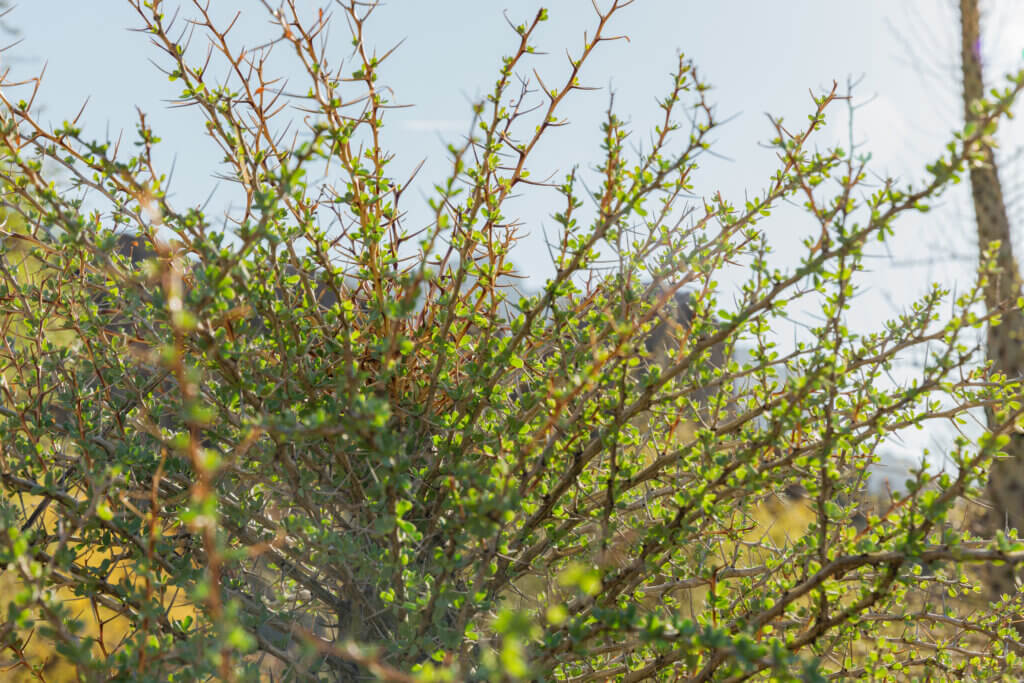
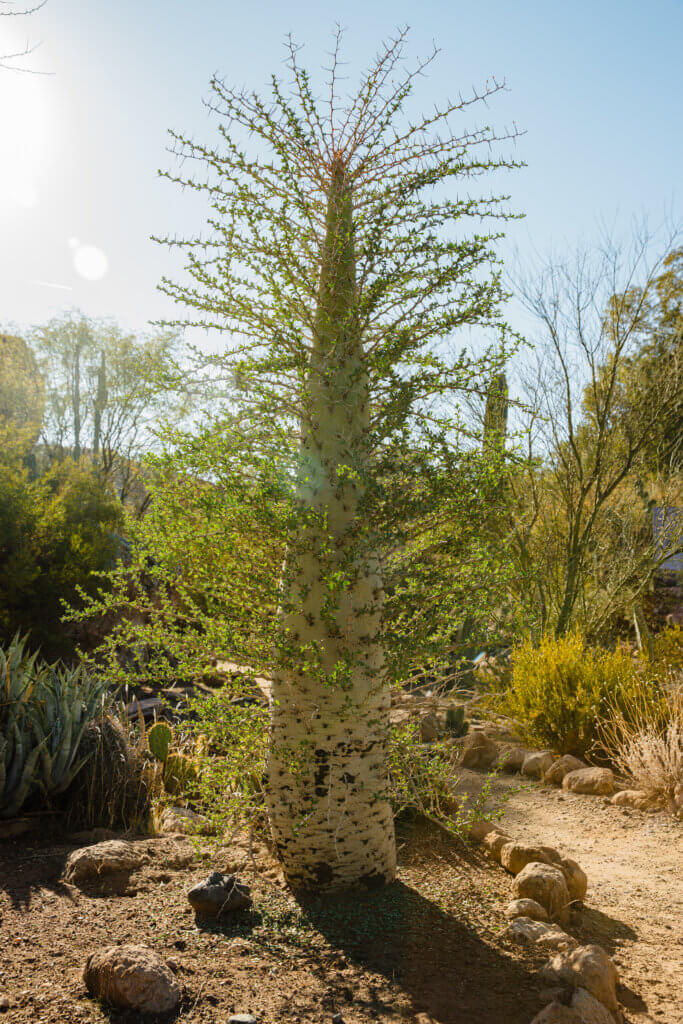
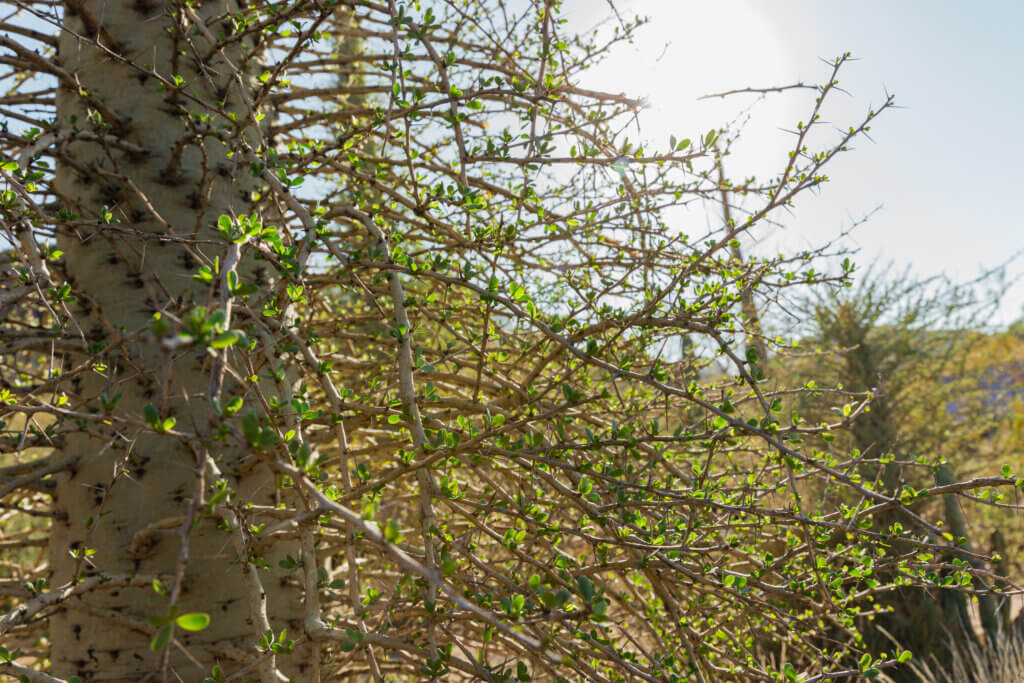
Dormancy and Slow Growth
Boojums are dormant during the warmer months. This survival strategy helps them to conserve energy and water in the desert heat. During the winter, boojums grow very slowly, adding only about 2 inches to their height each year. This deliberate and gradual growth is another example of the boojum tree’s adaptation to the challenging desert environment.
Flowers that Wow
The Boojum tree may look a bit bare with its skinny branches and small leaves, but when it flowers it is a sight to behold. As they break dormancy in late summer to early fall, clusters of tubular flowers pop up from the tips of its branches. The blooms paint the desert landscape with subtle colors of white and pink.
Helping Out in Nature
Boojum isn’t just amazing to look at; it plays a crucial role in the ecosystem. The flowers attract pollinators, including bees and hummingbirds. This adds to the overall biodiversity of the region. Plus, the tree’s branches offer shade to smaller desert plants and animals seeking relief from the hot sun.
Exploring and Conserving
Visitors of Boyce Thompson Arboretum can walk among our collection of several boojum trees. Plan your visit today to check out their unique features and immerse yourself in the beautiful diversity of desert plants. You’ll see how amazing the natural world really is, and why it’s important to protect arid ecosystems by preserving biodiversity and safeguarding these unique environments.
